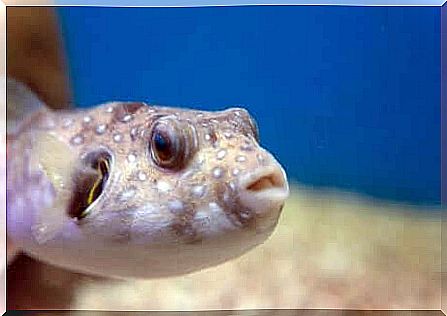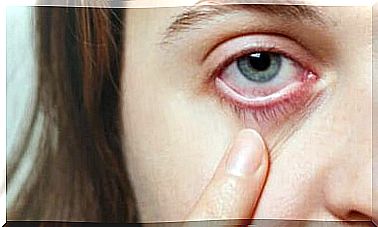Symptoms Of Poisoning From Eating Fish
Fish that contain these toxins do not look, smell or taste bad. Cooking, marinating or freezing them does not destroy the toxin.

The onset of vomiting, diarrhea, fever, abdominal pain and general weakness are the symptoms that may indicate that we are facing poisoning from eating fish, among other foods. They can come from the consumption of contaminated fish and seafood, either with bacteria or toxins.
These symptoms can compromise the life of the patient if they do not apply timely treatment, due to dehydration and electrolyte alterations. The infant population and the elderly are the most affected by these complications.
Fish poisoning
At certain times of the year, many species of fish and seafood contain poisonous biotoxins, which remain present even when properly cooked. According to the Centers for Disease Prevention and Control (CDC), it is considered a risk little recognized by travelers, especially those who travel to tropical and subtropical areas.
Fish that contain these toxins do not look bad, smell bad or taste bad. Cooking, marinating or freezing them does not destroy the toxin, so fish eating poisoning inevitably occurs.
1. Ciguatera poisoning

Reef fish from tropical and subtropical waters of the West Indies, the Pacific Ocean and the Indian Ocean pose the greatest threat. Cases have been reported in the United States, Hawaii, Guam, Puerto Rico, the Virgin Islands and Florida.
It is believed that over 400 species of fish, and especially reef fish, contain the toxin that causes ciguatera.
What are the symptoms of ciguatera?
Usually, symptoms of ciguatera poisoning appear between a few minutes and six hours after eating the poisonous fish. Symptoms include a variety of gastrointestinal, neurological, and cardiovascular abnormalities. They may include:
- Nausea
- Vomitings
- Watery diarrhea
- Headaches
- Numbness and tingling around the mouth and in the hands / feet
In the most severe cases, the person suffers from muscle aches, dizziness and feelings of inverted temperature, that is, hot things feel cold to them and cold things feel hot.
She may also have irregular heart rhythms and low blood pressure. Usually symptoms go away after a few days, but they can last up to four weeks.
2. Scombroid poisoning
Scombrotoxism, also known as scombroid poisoning or histamine poisoning, occurs after eating fish that contains high levels of histamine due to improper handling of the food.
These fish, which include sea bream, albacore tuna, common tuna, yellowfin tuna, gray sea bream, mackerel, sardines, anchovy, herring, marlin, amberjack and abalone, have large amounts of histidine. As a result of improper storage, the bacteria transforms histidine into histamine, causing intoxication.
What are the symptoms of scombroid poisoning?
Symptoms normally appear between a few minutes and an hour after eating the affected fish. Usually they last up to three hours but can go up to several days. Symptoms may include:
- A tingling or burning sensation in the mouth
- A rash on the face and upper body
- Difficulty in breathing
- A drop in blood pressure
- A throbbing headache
- Pimples and itching on the skin
- Nausea
- Diarrhea
- Vomitings
Symptoms of scombroid poisoning may resemble those of other illnesses or health problems. Many cases of “fish allergy” are actually scombrotoxisms. Remember to talk to your doctor to receive a correct diagnosis.
3. Tetrodotoxin poisoning, also called pufferfish poisoning

Tetrodotoxin, also known as pufferfish poisoning, is a much rarer form of poisoning from eating fish. It is nevertheless potentially serious, even very serious. It is almost exclusively associated with eating pufferfish from the waters of Indo-Pacific regions.
There have also been cases of poisoning, and even death, due to pufferfish from the Atlantic Ocean, the Gulf of Mexico and the Gulf of California.
What are the symptoms of pufferfish poisoning?
Symptoms usually appear between 20 minutes and three hours after eating the poisonous pufferfish. Here are the most common symptoms of pufferfish poisoning:
- Numbness of lips and tongue
- Numbness of face and hands / feet
- Sensation of luminosity or impression of floating
- Headache
- Nausea and vomiting
- Abdominal pain
- Diarrhea
- Difficulty speaking
- Generalized muscle weakness
- Convulsions
- Respiratory failure
- Cardiac arrythmia
In the most severe cases, death can occur within four to six hours of poisoning. It is therefore essential to seek immediate medical assistance.
How to avoid poisoning by eating fish?
To avoid ciguatera poisoning, avoid eating fish that tend to transmit it: amberjack, grouper, pagre, sturgeon, mackerel, barracuda and brown eel. The venom is concentrated more in the internal organs of the fish, so you should never eat these parts.
To avoid scombroid poisoning, do not eat any fish that has not been adequately refrigerated. Take special care when eating fish like tuna, sardines, mackerel, sea bream or anchovies.









